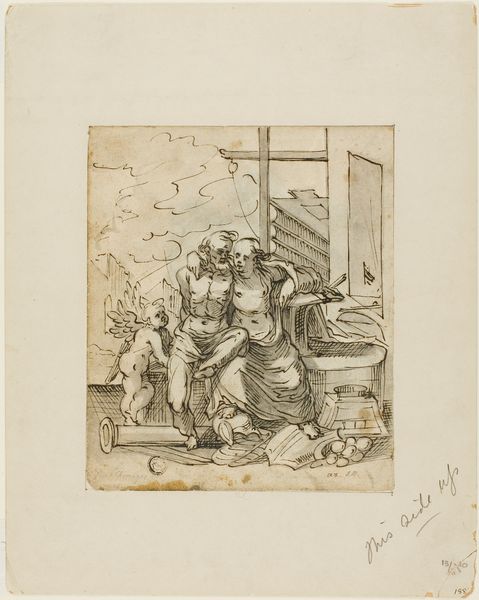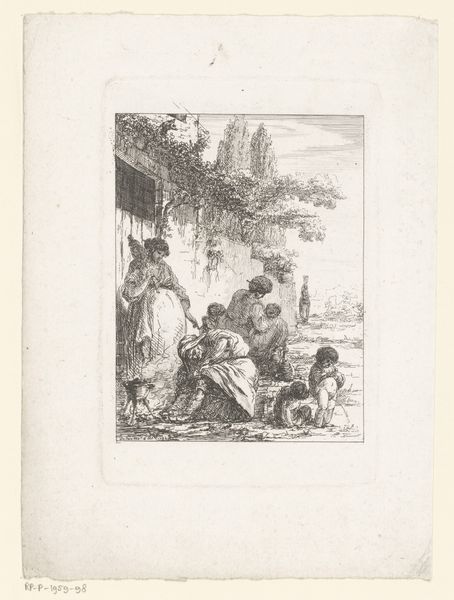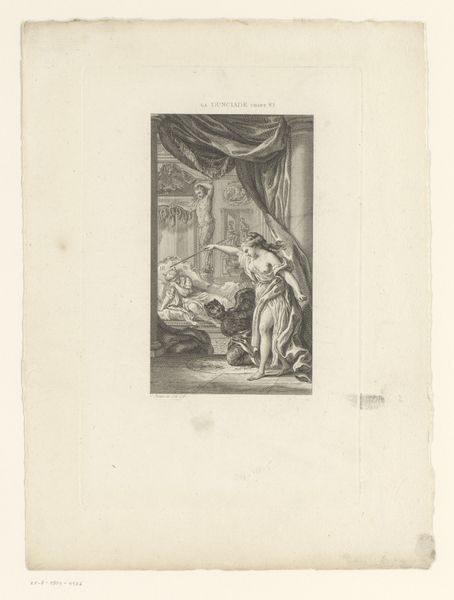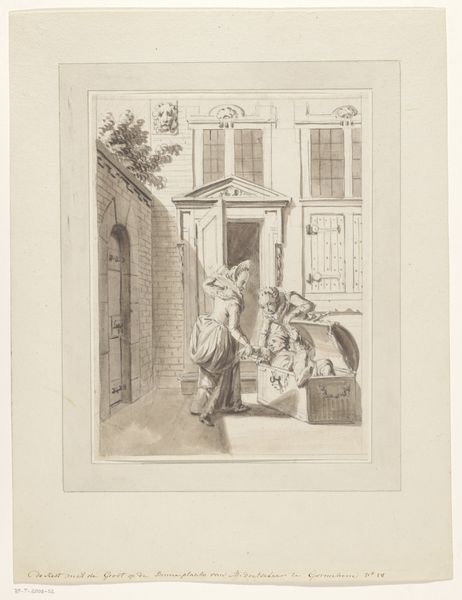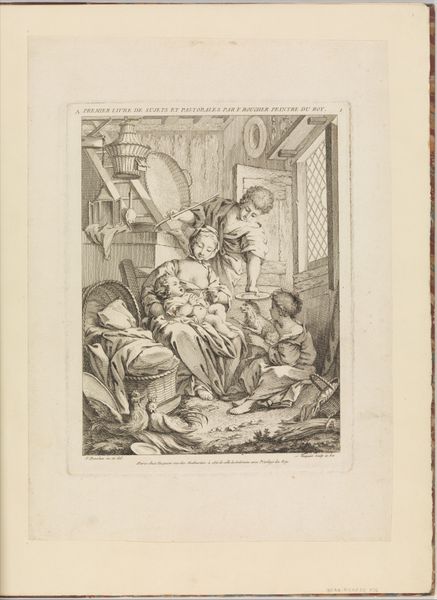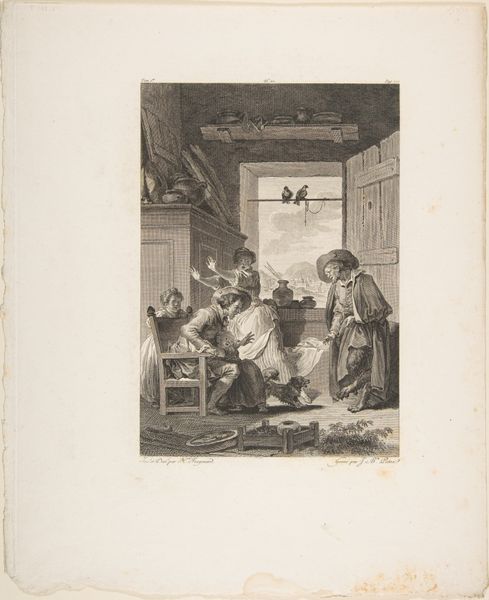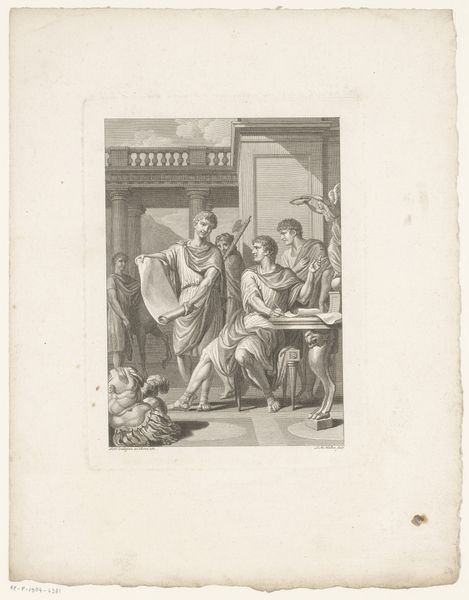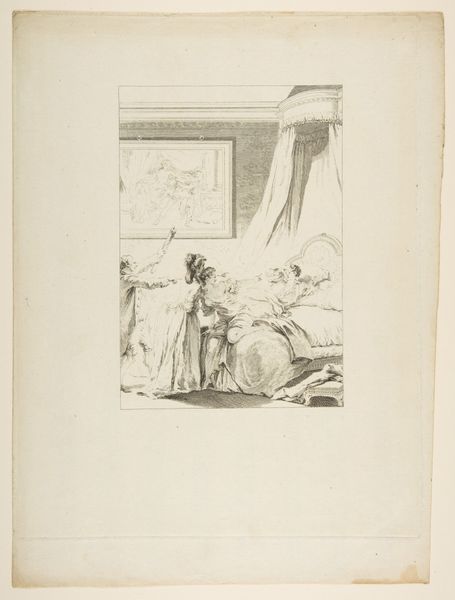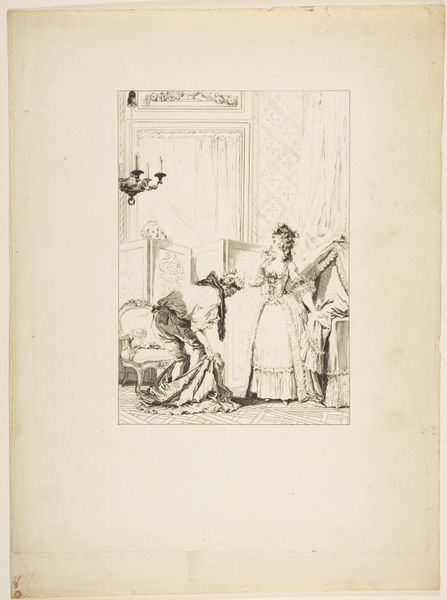
On ne s'avise jamais du tout, from "Contes et nouvelles en vers par Jean de La Fontaine. A Paris, de l'imprimerie de P. Didot, l'an III de la République, 1795" 1795
0:00
0:00
drawing, print, etching, paper, engraving
#
drawing
#
neoclacissism
#
narrative-art
#
ink paper printed
# print
#
etching
#
figuration
#
paper
#
men
#
genre-painting
#
history-painting
#
engraving
Dimensions: Sheet: 13 11/16 x 10 1/16 in. (34.8 x 25.5 cm) Plate: 12 1/2 × 9 5/8 in. (31.7 × 24.5 cm)
Copyright: Public Domain
Curator: Here we have "On ne s'avise jamais du tout," a print created in 1795 by Jean-Baptiste Patas, part of an illustrated edition of La Fontaine's tales. Its delicate lines, achieved through etching and engraving, depict a scene brimming with activity. Editor: The composition feels chaotic at first glance. A swirl of figures dominates the foreground, set against a rather cramped domestic interior. The energy is almost frantic. Curator: Indeed. It speaks to the broader themes circulating at the time regarding domesticity, gender roles, and even class dynamics, wouldn't you say? The focus on the almost panicked women, likely responding to some kind of kitchen mishap with the overbearing fireplace feature, allows us to consider anxieties around the management of households in a period of revolutionary social change. Editor: That large fireplace looming in the background almost has a bestial presence, belching out smoke and dominating the composition. And all those pots and implements speak of daily toil, even struggle. This could symbolize the unpredictability that domesticity imposed upon women of the era, a notion echoed by the man dashing away with his head covered, shirking whatever responsibility he had. Curator: And Patas’ neoclassical style lends a veneer of order and morality, masking a perhaps uncomfortable reality: domestic labor and women's roles in it being uncompensated, almost expected. In fact, the historical backdrop during the French Revolution provides interesting counterpoints. It calls into question ideals of freedom when compared with gender-based work expectations and patriarchal norms during the rise and fall of egalitarianism. Editor: But even more fundamental, I wonder about the symbol of ‘home’ being one of sudden disruption and flight. Is it too much to suppose this could signal something about personal trauma? Curator: Well, it depends, doesn’t it, on what elements within this tableau resonate the most! If it’s a vision of collective unrest rooted in socioeconomic expectations, perhaps our readings need to engage with those social-historic frameworks that frame lived experience… Editor: A domestic drama frozen in ink. Interesting... Curator: Fascinating indeed. It highlights how visual culture is steeped with so many possibilities and opportunities to see through our respective experiences.
Comments
No comments
Be the first to comment and join the conversation on the ultimate creative platform.

